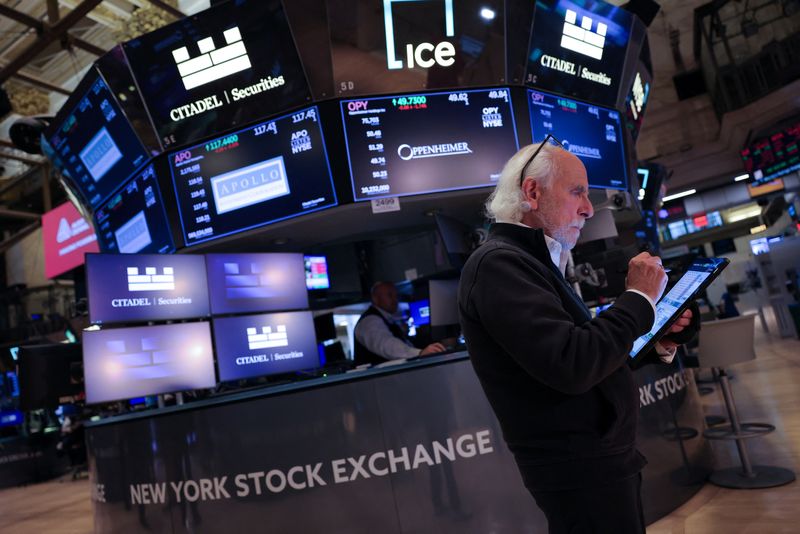Futures jump as growth stocks lead gains after Fed cuts rates
By Johann M Cherian and Purvi Agarwal
(Reuters) -U.S. stock index futures jumped on Thursday, with those linked to the tech-heavy Nasdaq climbing 2% after the Federal Reserve started its easing cycle with a jumbo 50-basis-point cut to interest rates, aiding a soft landing for the world's biggest economy.
Rate-sensitive growth stocks that have led much of this year's rally such as Microsoft (NASDAQ:MSFT ), Meta (NASDAQ:META ) and Alphabet (NASDAQ:GOOGL ) advanced 2% in premarket trading.
Semiconductor stocks also climbed. Nvidia (NASDAQ:NVDA ) rose 3.2%, while Advanced Micro Devices (NASDAQ:AMD ) and Broadcom (NASDAQ:AVGO ) gained 3.3% with the broader market.
Futures tracking the domestically focused Russell 2000 index shot up 3%.
A lower interest environment could mean prospects of lower operating costs and greater profits for credit-dependent companies.
At 7:17 a.m. ET, Dow E-minis were up 456 points, or 1.1%, S&P 500 E-minis were up 91.25 points, or 1.61% and Nasdaq 100 E-minis were up 404.75 points, or 2.07%.
After delivering its super-sized verdict on Thursday, the Fed assured that it was not an emergency response and unveiled projections that analysts say reflect conditions for the economy to achieve a goldilocks scenario, where growth is steady and inflation and unemployment stay low.
"The Fed took out an insurance policy against further labor market weakening. Chair (Jerome) Powell emphasized that there are no signs of an imminent downturn in what he described as a 'strong economy'," said Ronald Temple, chief market strategist at Lazard (NYSE:LAZ ).
Traders now see a 67% chance that the central bank will lower interest rates by 25 basis points at its November meeting, as per the CME Group's (NASDAQ:CME ) FedWatch tool.
BofA Global Research now anticipates a total of 75 bps rate cuts by the end of this year, compared with 50 bps forecast earlier. Citigroup revised its rate-cut expectations for December to a smaller 25 bps, from a forecast of a bigger move.
Goldman Sachs now expects consecutive 25 bps cuts from November 2024 through June 2025.
Market reaction in the aftermath of the decision was muted, with all the three indexes closing slightly lower in the previous session.
However, data going back to 1970 from Evercore ISI showed the S&P 500 has posted an average 14% gain in the six months following the first reduction of a rate-cutting cycle.
September has generally been a disappointing month for U.S. equities with the S&P 500 notching an average loss of 1.2% since 1928.
The benchmark index has logged losses so far this month but is close to record highs, and the blue-chip Dow is just short of its respective milestone.
On the data front, weekly jobless claims and existing home sales for August are on investors' radar.
JPMorgan Chase & Co (NYSE:JPM ) added 1.1%, Bank of America climbed 1.7% and Wells Fargo advanced 1.8% after the big banks lowered their respective prime rates. Citigroup also rose 1.9% after cutting its base lending rate.
Progyny (NASDAQ:PGNY ) was among a few stocks that traded lower. The fertility benefits management firm plunged 26% after a significant client notified the company it had elected to exercise a 90-day option to terminate its services agreement.
Source: Investing.com
